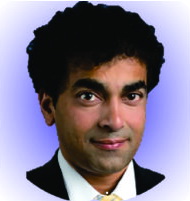Dr Abhay Nene, WeAreSpine, Lilavati and Breach Candy Hospitals, Hinduja Surgical Specialty, HN Reliance, Global, Wockhardt, Apollo Hospitals, Wadia Children’s Hospital, Mumbai, Maharashtra, India. E-mail: abhaynene@yahoo.com
In the realm of medicine, few fields have witnessed as rapid and profound a transformation as spine surgery. Over the last 5 years, technological advancements have not just trickled but surged, heralding a new era that promises to redefine surgical practices in the coming decade. Let’s explore the multifaceted impact of these changes, celebrating their potential while also contemplating the broader implications for healthcare. At the heart of this revolution, it is a commitment to enhancing patient safety and improving surgical outcomes. The latest innovations aim to make spine surgery safer and the techniques more reproducible. From robotics to augmented reality, from advanced imaging techniques to minimally invasive procedures, technology is setting new benchmarks in precision and efficiency. The spine surgeon community watches these developments with a mixture of excitement and anticipation, eager to embrace the possibilities that lie ahead. However, as we stand on the cusp of this new frontier, it is imperative that we consider the broader implications of these technological advances. One of the most pressing concerns is the impact on healthcare costs. As technology raises the bar for what is considered standard care, there is a risk that the overall cost of healthcare could escalate, making advanced treatments less accessible to a broader segment of the population. This raises ethical questions about equity and access, challenging us to find a balance between innovation and inclusivity. Moreover, the rapid pace of technological advancement could potentially shift the baseline for what is deemed minimally acceptable in terms of safety standards. As we push the boundaries of what is possible, we must ensure that the pursuit of excellence does not inadvertently compromise patient safety by making the exceptional the expected norm.
Another critical consideration is the impact on the surgical community itself, particularly the training and development of younger surgeons. As they become increasingly reliant on technology, there is a risk that fundamental surgical skills could be overshadowed by technological proficiency. This dependency could create a chasm between those who have access to cutting-edge tools and those who do not, further exacerbating disparities within the medical community. As we navigate this technological revolution, each responsible spine surgeon must reflect on these issues. The integration of technology into spine surgery is not just a matter of embracing new tools but also understanding their implications for the practice, the health-care system, and society at large. It is about striking a balance between leveraging technology to push the boundaries of what is possible and ensuring that these advances benefit all patients, regardless of their socioeconomic status. To conclude, it is fair to say that the technological revolution in spine surgery is a double-edged sword. While it offers unprecedented opportunities to improve patient outcomes and redefine surgical practices, it also poses significant challenges that require careful consideration. As we move forward, it is crucial that we approach these developments with a sense of responsibility and a commitment to ethical principles. Love it or hate it, technology in spine surgery is here to stay, and it is up to us to ensure that its legacy is one of progress, equity, and compassion.
Dr. Abhay Nene
Spine Surgeon
We Are Spine






